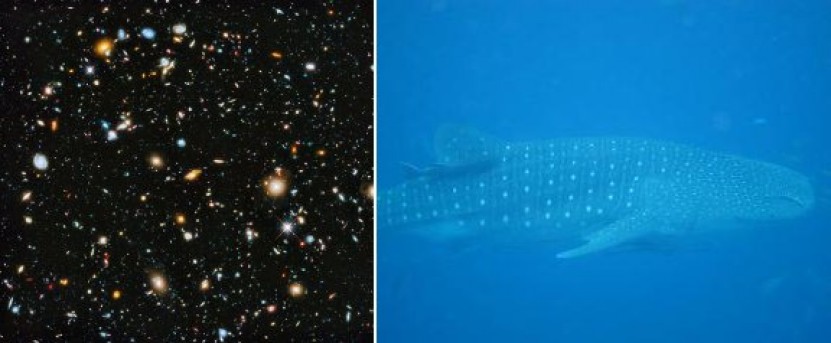What does The Hubble have in common with a Whale Shark?

The Groth algorithm is a pattern-matching algorithm invented by Edward J. Groth, a Princeton physics professor, in 1986 that that could compare and identify complex star patterns by triangulating all of the possible star triplets in a given image.
This was added to Hubbles STSDAS software package to assist in mapping the some 10,000 galaxies of the famous Hubble Ultra Deep Field image.
Following excerpt from: http://www.techbriefs.com/component/content/article/23-ntb/features/feature-articles/21708-hubble-spinoffs-space-age-technology-for-the-masses?start=1
"In 2002, scuba diver Jason Holmberg had a rare encounter with a whale shark, an endangered species characterized by its distinctive markings – a unique pattern of white spots on its skin as distinctive as a human’s fingerprints. Tracking the fish by comparing photos and matching spots was a tedious and imprecise science, so Holmberg turned to an astrophysicist friend of his, Dr. Zaven Arzoumanian. Through Arzoumanian’s work with the Goddard Space Flight Center, they came across the Groth algorithm and realized it could be adapted to their purpose. They modified the algorithm to compensate for the graphical differences between the size and shape of a whale shark’s spots and stars in the sky, and made several other enhancements.
Since then, Holmberg has assembled a whale shark database called the ECOCEAN Whale Shark Photo-identification Library, to which anyone can contribute photos."



